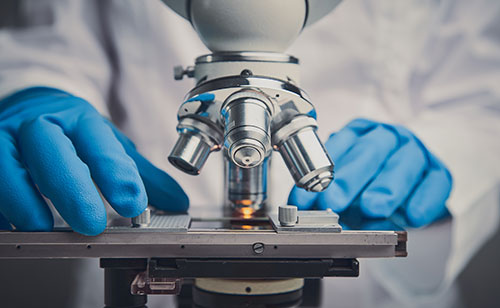Leather & Footwear Testing: Ensuring Quality and Durability
Introduction
Leather and footwear testing is a crucial aspect of the manufacturing process, ensuring that the products meet the required standards of quality, safety, and performance. This testing involves a variety of methods to assess different properties of leather and footwear, from physical and mechanical attributes to chemical composition. The objective is to ensure that the products are fit for purpose, durable, and safe for the consumer, while also meeting the regulatory and environmental standards of the industry.
Importance of Leather & Footwear Testing
Leather and footwear products are subject to a range of environmental conditions and mechanical stresses during their use. Testing is vital to identify potential defects or weaknesses that could lead to product failure, discomfort, or safety issues for the end-user. Furthermore, testing ensures that the products comply with legal standards, such as those related to toxic substances, and helps manufacturers maintain consistent quality across production batches.Key Benefits of Testing:
- Quality Assurance: Testing verifies that the leather and footwear meet the specified quality standards, ensuring customer satisfaction.
- Regulatory Compliance: Compliance with national and international regulations regarding safety, health, and environmental impact is ensured through rigorous testing.
- Durability and Performance: Testing helps predict the longevity and performance of the products under various conditions.
- Brand Reputation: Consistent testing ensures that the brand maintains its reputation for quality and reliability.
Types of Leather & Footwear Testing
Leather and footwear testing encompasses a wide range of tests, each designed to evaluate specific characteristics of the materials and finished products. These tests can be broadly categorized into the following types:
Physical and Mechanical Testing
This type of testing assesses the physical and mechanical properties of leather and footwear, including:
- Tensile Strength: Measures the leather's ability to withstand pulling forces without breaking.
- Tear Strength: Evaluates the resistance of leather to tearing, which is crucial for durability.
- Flexing Endurance: Tests how well the leather can withstand repeated flexing without cracking, crucial for footwear longevity.
- Abrasion Resistance: Determines how well the leather can resist wear and tear, ensuring that it can withstand daily use.
- Adhesion of Finish: Assesses how well the finish adheres to the leather surface, important for both appearance and durability.
Chemical Testing
Chemical testing examines the composition of the leather and any potential harmful substances present. Key tests include:
- pH Value: Determines the acidity or alkalinity of the leather, which affects its durability and comfort.
- Chromium VI Content: Ensures that the leather does not contain harmful levels of Chromium VI, a known carcinogen.
- Formaldehyde Content: Measures the presence of formaldehyde, which can cause allergic reactions in some individuals.
- Color Fastness: Tests how well the leather retains its color when exposed to factors like light, water, and sweat.
Environmental Testing
This testing evaluates how well the footwear and leather products perform under various environmental conditions:
- Thermal Aging: Assesses how exposure to heat affects the leather's properties, simulating long-term use.
- Water Resistance: Measures the ability of footwear to resist water penetration, which is essential for outdoor and all-weather products.
- UV Resistance: Tests the leather’s resistance to ultraviolet light, preventing degradation due to sun exposure.
Safety Testing
Safety testing is critical, especially for footwear that needs to meet specific safety standards:
- Slip Resistance: Evaluates the grip of the footwear sole on different surfaces, essential for preventing slips and falls.
- Impact Resistance: Tests the ability of safety footwear to protect the foot from heavy impacts, such as falling objects.
- Compression Resistance: Measures the footwear's ability to protect the foot from being crushed under heavy loads.
Standards for Leather & Footwear Testing
Leather and footwear testing is governed by a range of international and national standards. These standards ensure that products meet specific quality and safety criteria. Some of the most widely recognized standards include:
ISO Standards: The International Organization for Standardization (ISO) provides a comprehensive set of standards for leather and footwear testing, including ISO 20344 for safety footwear testing and ISO 2417 for leather pH testing.
- ASTM Standards: The American Society for Testing and Materials (ASTM) offers standards such as ASTM D2209 for leather tensile strength and ASTM D3389 for abrasion resistance.
- EN Standards: The European Norm (EN) standards, such as EN 344 for safety footwear testing, are widely used in Europe and other regions.
Testing Methods and Equipment
Various methods and equipment are used to perform leather and footwear testing. The choice of method depends on the specific property being tested.
- Universal Testing Machine (UTM)
Used for tensile, tear, and adhesion tests, a UTM applies controlled forces to leather samples to measure their strength and elasticity. The machine records the force and elongation until the sample breaks, providing critical data on the material's performance.
- Martindale Abrasion Tester
This device assesses the abrasion resistance of leather by rubbing it against a standard abrasive material under a specified pressure. The test continues until the leather shows wear, and the result helps predict how well the material will perform in real-life conditions.
- Xenon Arc Tester
For testing UV resistance, the Xenon Arc Tester exposes leather to simulated sunlight in a controlled environment. The machine accelerates the aging process, providing insights into how the material will hold up over time when exposed to sunlight.
- Chemical Analysis Equipment
Techniques like Gas Chromatography-Mass Spectrometry (GC-MS) and Atomic Absorption Spectroscopy (AAS) are used to detect and quantify chemicals in leather. These methods ensure that the material complies with safety standards, particularly regarding harmful substances.
Challenges in Leather & Footwear Testing
Despite the advancements in testing technologies, there are several challenges that manufacturers and testers face:
- Complexity of Leather: Leather is a natural material with inherent variations in texture, thickness, and quality. These variations can complicate testing and require careful selection of representative samples.
- Evolving Standards: Regulatory standards for leather and footwear are constantly evolving, driven by new research and consumer safety concerns. Keeping up with these changes can be challenging for manufacturers.
- Environmental Concerns: The leather industry is under increasing scrutiny for its environmental impact. Testing for compliance with eco-friendly standards is becoming more critical, adding another layer of complexity to the testing process.
Conclusion
Leather and footwear testing is an essential part of the manufacturing process, ensuring that the products are of high quality, safe, and durable. Through a combination of physical, chemical, environmental, and safety tests, manufacturers can identify potential issues early, comply with regulatory standards, and maintain the trust of their customers. As the industry continues to evolve, with new materials and standards emerging, the importance of rigorous testing will only grow, helping to ensure that leather and footwear products meet the highest standards of excellence.Contact Us Today
Let us help you ensure compliance and product quality
